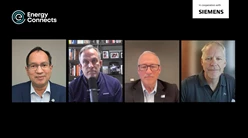Innovative technologies to decarbonise ethylene for a sustainable future
In an exclusive ADIPEC News interview, Bhaskar Patel, SVP Sustainable Fuels, Chemicals & Circularity at Technip Energies, discusses how ethylene, a key building block in everyday products, is a major carbon emitter and highlights the company's decarbonisation solutions like low-emission crackers, hydrogen firing, CO2 capture, electrification, circular feedstocks, bioethylene technologies, and future innovations such as rotating olefins crackers and eFurnace systems.
Ethylene is the world’s basic building block
Ethylene is the key building block to a host of different monomers and polymers that find their way into almost every aspect of our daily life. From plastics to textiles, vinyl to rubber, all the chemical compounds used to make everyday products come from ethylene. Traditional ethylene is “cracked” from hydrocarbons (naphtha, gas oil, ethane and LPG) and produces carbon emissions. Ethylene is one of the largest emitters of carbon dioxide (CO2) in the chemical industry.
What are Technip Energies’ pathways to decarbonise ethylene?
As a major technology and engineering provider to the ethylene industry for more than 60 years, Technip Energies has focused on improving energy efficiency and reducing emissions from ethylene production. To date, we offer six technological solutions to decarbonise ethylene plants without limiting operational capacity.
- An efficient, low-emission cracker design that reduces carbon by up to 40%
- Incorporating hydrogen firing in the furnaces to reduce CO2 emissions by up to 85%, depending on the source of the hydrogen
- CO2 capture from the furnace flue gas for storage, sequestration or utilisation, eliminating up to 95% of carbon emissions
- Oxycombustion with carbon capture - oxycombustion replaces the ambient air to the furnace burners with oxygen, enabling the capture of the CO2 and reducing emissions up to 95%
- Electrification of major compressors within the plant, particularly if used with renewable energy sources
- Utilising circular feedstocks (e.g., pyoil and pygas) to eliminate 2.5 tons/CO2 per ton of high-value chemicals produced compared to naphtha cracking
All of these solutions are commercially available and many of them already are in use in installed crackers at ethylene facilities across the world.
What is on the horizon as far as future technologies?
Much of our success in the ethylene journey stems from our innovative culture and pursuit of continuous improvements. We currently are exploring disruptive technologies such as the rotating olefins cracker, which incorporates novel shockwave turbomachinery to completely avoid fuel combustion. Together with Siemens Energy, we currently are testing this technology that eliminates more than 75% of CO2 emissions and substantially improves the specific energy consumption.
In addition, our eFurnace by T.ENTM solution replaces conventional furnaces with electrically heated furnaces, naturally reducing emissions by up to 90% depending on the electricity source. Reliable renewable energy will make the eFurnace by T.ENTM a viable and attractive solution.
How do bioethylene technologies fit into the big picture?
Technip Energies offers the leading bioethanol to bioethylene technology in the market, our Hummingbird® technology. This technology can convert any ethanol from 1G (e.g. corn, sugar cane), 2G (e.g., straw, wood) or any advanced ethanol such as ethanol from recycled carbon (CO / CO2) to ethylene. Hummingbird is an endothermic reaction, utilising a gas phase reaction over an acid catalyst. The reaction occurs in two steps from ethanol to diethyl ether [DEE] and then to ethylene.
Technip Energies and LanzaJet have combined our Hummingbird® technology and their alcohol-to-jet technology to produce sustainable aviation fuel (SAF). The first commercial plant in Soperton, Georgia, USA will produce 10 million gallons of SAF per year.
We also are working with LanzaTech on new technology to use our Hummingbird® technology to transform carbon dioxide emissions into ethylene. First, up to 95% of the CO2 in the flue gas is captured from the furnaces of an ethylene cracker and mixed with hydrogen. Next, LanzaTech’s biorecycling technology transforms the captured waste carbon into ethanol. Finally, our Hummingbird technology dehydrates ethanol to ethylene.
Navigating innovation for decarbonised ethylene production
Technip Energies is at the forefront of providing many innovative pathways to decarbonise ethylene production for new and brownfield plants. As regulatory mandates increase and companies strive to find ways to reduce their carbon footprint, we can help navigate the best solutions for your operations.





